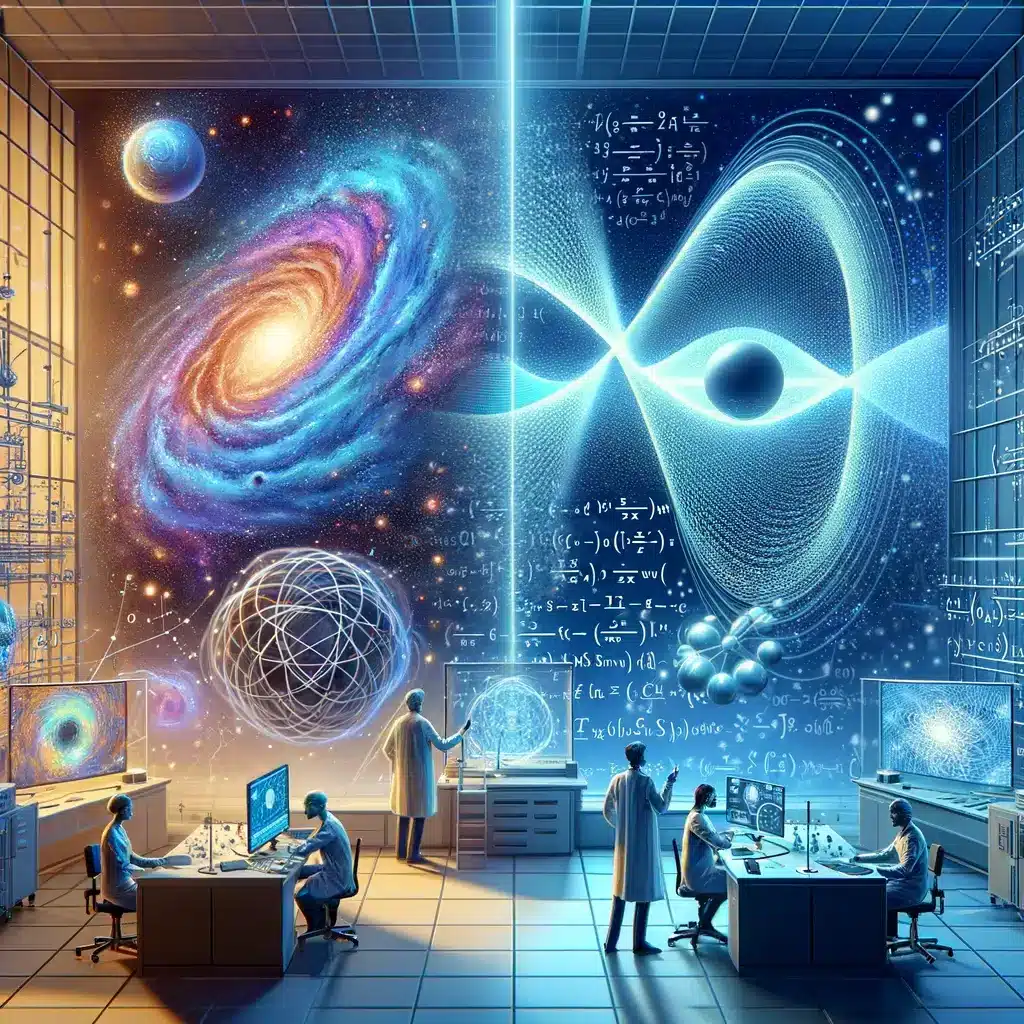A research partnership between theoretical physicists and computational physicists at the University of Virginia that may offer new insight into the possibility of a theory of everything or, at the very least, a better understanding of gravity, one of the fundamental forces of the universe

Long before Archimedes suggested that all phenomena observable to us might be understood through fundamental principles, humans imagined the possibility of an order to everything. Over the past century, physicists have come closer to unraveling this mystery. Albert Einstein's theory of general relativity provides a solid foundation for understanding the universe on a large scale, while quantum mechanics allows us to understand its workings at the subatomic level. The problem is that the two systems do not agree on how gravity works.
Today, artificial intelligence offers new hope to scientists grappling with the massive computational challenges involved in unraveling the mysteries of something as complex as the universe and everything in it, and Kent Yagi, an associate professor in the University of Virginia's College and Graduate School of Humanities and Sciences, is leading a research partnership between physicists theoretical and computational physicists at the University of Virginia that may offer new insight into the possibility of a theory of everything or, at the very least, a better understanding of gravity, one of the fundamental forces of the universe.
Breakthroughs in observing the universe
One aspect of Einstein's theory of general relativity is that objects moving through space create waves, much like a boat moving through water, but even when these waves are created by planets, stars and galaxies, or even black holes that can create the strongest possible gravitational fields, they are still small unimaginably. As a result, almost a hundred years after Einstein first published his ideas about gravitational waves, the technological means to observe them were developed. In 2015, a program known as LIGO, or the Laser Interferometer Gravitational-Wave Observatory, one of the largest projects ever funded by the NSF, detected gravitational waves for the first time, leading to a Nobel Prize in Physics for the project's leaders. At the same time, the European Union funded a parallel observatory called VIRGO.
"The discovery was one of the most important moments in physics in the last hundred years," Yagi said.
And as the technology required to observe subatomic phenomena advances, so does the computational ability required to process vast amounts of data that astronomers collect about the universe. In addition, new developments in machine learning and artificial intelligence in recent years allow scientists to create and test complex mathematical models that describe the phenomenon they observe at a rate that was once unimaginable.
Yagi studies the enormous gravitational waves created by pairs of black holes and double neutron stars—some of the densest objects in the universe that are 10 times stronger to the 13th power than a typical refrigerator magnet, according to Yagi—and he uses these phenomena to test Einstein's theories about gravity and test the The basic laws of nuclear physics in search of information to help resolve the disconnect between Einstein's theory and quantum mechanics.
Financing and educational advocacy
The CAREER grant, on behalf of the US National Science Foundation, will bring $400,000 in funding to the college over the next five years, creating opportunities for current and future graduate students interested in developing and applying machine learning algorithms to help explain and predict observations of gravitational waves and give us a deep understanding More of the behavior of gravity.
Once the computational algorithms are precisely designed -- a process that should take as little as a few weeks -- Yagi said his team will be able to process the data collected by LIGO to test Einstein's theory a hundred times faster. "And the volume of space in which we can search for this data will increase tenfold," Yagi said.
How close will we get to a theory of everything?
"There are still many problems that need to be solved," Yagi said. "I hope I will see it in my lifetime, but I don't want to be too optimistic."
"Proving a theory is almost impossible," Yagi explained. "There will always be a measurement error in any experiment, but we will continue to try to see if we find evidence that will disprove the theory of general relativity. At the same time, we just keep discovering how beautiful and correct she looks."
"Recently there has been a very big push to better understand gravitational waves not just as a prediction or a theoretical concept but to be able to detect them directly," said Phil Aras, head of the Department of Astronomy at the University of Virginia. "This effort opened a whole new window on the universe and gave us a new way to test our theories about how stars evolve. Kent's research was very important to our understanding of this."
More of the topic in Hayadan:

3 תגובות
Write on YouTube - physics from another world.
You will receive a lecture from a nice guy named Tal who explains exactly that. A must for those who cannot understand why our physicists are stuck without answers.
Scientific theories should give a prediction for the results of an experiment that can be tested. In religion it is exactly the opposite.
The theory of everything has existed for a long time.
This is divinity, and the Rambam has already talked about it for a long time.
Science only works to prove it.
For the future to come, everyone will understand this and this is what is said "On that day God will be one - and His name is one". There will be a balance between the knowledge that there is a divine God who animates reality and the actual discovery of how this is revealed to our eyes in every detail except reality.